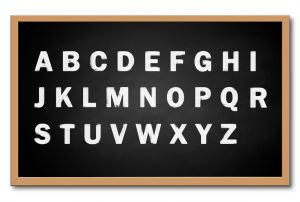Guidance for Creating
Phonics Lessons
for Dyslexic Students
Phonics lessons created for dyslexic people should help them to gain a greater understanding of the fundamental principles of English. The lessons should teach them to clearly distinguish all 44 sounds, while at the same time illustrate the intricacies of how the sounds match up to the letters.

Start with the fundamental principles:
Dyslexic children need to know the truth about the English language, that there is more than one way to write each sound. This means spelling is made up of two main processes sounding words out and memory.
Dyslexic students will build confidence from learning this fundamental truth of English. It shows them exactly how the language works. This understanding will help to reduce any worries or confusion giving them a stable foundation to build intellectual self-esteem.
The phonic alphabetic code chart:
This chart is without a doubt one of the most important things for teaching phonics. This chart also beautifully illustrates the fundamental principles of English. Click here for the phonic alphabetic code chart.
Phonics lessons:
The first thing to do is to establish if a child has any problems distinguishing between any of the 44 speech sounds. There may be some subtle phonological distinctions being missed.
For example it is
not uncommon for dyslexic people to have problems distinguishing between ‘th’ and ‘f’ sounds.

Clear phonological distinction:
You may find a particular child or adult has problems distinguishing between some of the 44 sounds. If so then you need to create exercises that highlight the distinctions.
For example:
Let’s use the sounds ‘f’ and ‘th’ to illustrate this point.
You need to find examples of words that the student can compare. This will help them make the distinction between the sounds clearer.
For some dyslexic people the words ‘free’ and ‘three’ sound
pretty much the same. However the words 'thesaurus' and 'Friday' make the distinction much clearer.
Blending, segmenting and memory:
When a child is learning how to spell sound by sound it is important to make them aware that memory plays an intrinsic part in this process.
When blending and segmenting your students need to remember how combinations of letters are grouped together. You need to use the phonic alphabetic code chart to show them exactly what
they need to remember.
Conclusion:
Hopefully you found this guide for creating phonics lessons useful. The key to teaching phonics to dyslexic students is to help them understand how the English Language works. This will remove their confusion and build confidence. Click here for more help for dyslexia teachers.